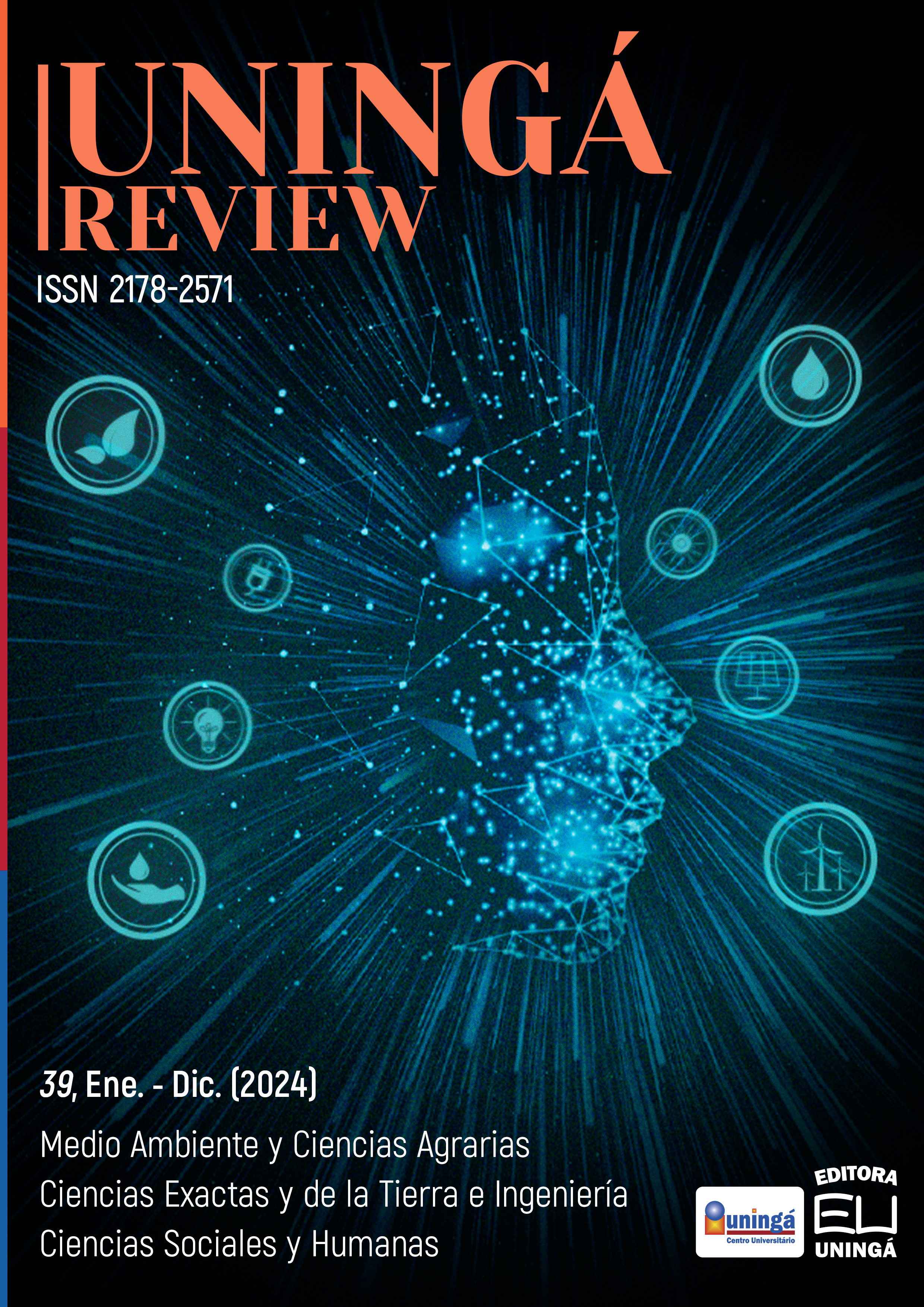Osteoartrose lombossacra em leoa (Panthera leo)
DOI:
https://doi.org/10.46311/2178-2571.39.eURJ4691Palabras clave:
Artrose, Cativeiro, Felídeos, Ortopedia, RadiologiaResumen
A osteoartrose é um distúrbio crônico, deteriorando a cartilagem articular e estruturas periarticulares, sendo uma grande causa de dor articular nos felinos senis. Gatos frequentemente desenvolvem artroses devido ao envelhecimento, obesidade e sedentarismo, fatores comuns em cativeiro. Assim, pode-se considerar que artroses em felinos selvagens são desencadeadas pelos mesmos fatores, considerando a fisiologia do gato doméstico (Felis catus) como similar aos demais membros da família Felidae. Este trabalho objetivou relatar um caso de osteoartrose lombossacra em uma leoa (Panthera leo). O animal de 20 anos de idade, do Parque Ecológico de Americana – SP, apresentava sinais de apatia e hiporexia, sendo encaminhado para o Hospital Veterinário da Faculdade de Americana (FAM), onde foram realizados exames de check-up. Não havia alterações em hemograma, enquanto no bioquímico foram observados leve hipoalbuminemia e grande aumento de amilase. Na ultrassonografia, rins apresentaram contornos sutilmente irregulares. Na endoscopia, havia hiperemia em vias respiratórias e nódulos polipoides em nasofaringe. Na laringe, foram observadas úlceras bilaterais em região subglótica e, em brônquios, malácia e fratura de anéis brônquicos. Na radiografia, foram vistos processos de mineralização das articulações esternocondrais e luxação xifoide. Na coluna vertebral, havia presença de entesófitos em vértebras, pontes anquilosantes, opacificação de forame intervertebral, perda de definição de facetas articulares, remodelamento de corpos vertebrais e estruturas puntiformes de radiopacidade mineral sobrepondo processos espinhosos. Conclui-se, portanto, que pela proximidade genética e evolutiva, deve-se atentar aos sinais de artrose em felinos selvagens, pois assim como ocorre em felinos domésticos, os fatores predisponentes comumente presentes em ambiente cativo, juntamente com a idade avançada, podem desencadear a osteoartrose.
Descargas
Citas
Adania, C, H., Silva, J. C. R., & Felippe, P. A. N. (2014). Carnivora – Felidae (Onça, Suçuarana, Jaguatirica e Gato-do-mato). In Cubas, Z. S., Silva, J. C. R., & Catão-Dias, J. L. (ed.), Tratado de Animais Selvagens - Medicina Veterinária (v. 1, 2nd ed., pp. 779-818). Rio de Janeiro, RJ: Grupo GEN.
Barton, L. (2022). Radiographic characteristics and clinical presentation of DJD in captive cheetahs (Acinonyx jubatus), lions (Panthera leo) and tigers. [PhD Thesis, Sydney School of Veterinary Science, Faculty of Science, University of Sydney].
Denny, H. R., & Butterworth, S. J. (2006). Cirurgia ortopédica em cães e gatos, (4th ed., pp. 39-48). São Paulo, SP: Roca.
Eloff, F. C. (1998). The life of the Kalahari lion (Panthera leo vernayi). Transactions of the Royal Society of South Africa, 53(2), pp. 267–269. doi: 10.1080/00359199809520393 DOI: https://doi.org/10.1080/00359199809520393
Felippe, P. A. N., & Adania, C, H. (2014). Conservação e Bem-estar Animal. In Cubas, Z. S., Silva, J. C. R., & Catão-Dias, J. L. (ed.), Tratado de Animais Selvagens - Medicina Veterinária (v. 1, 2nd ed., pp. 2-9). Rio de Janeiro, RJ: Grupo GEN.
Fujita, Y., Hara, Y., Nezu, Y., Yamaguchi, S., Schulz, K. S., & Tagawa, M. (2005). Direct and indirect markers of cartilage metabolism in synovial fluid obtained from dogs with hip dysplasia and correlation with clinical and radiographic variables. American Journal of Veterinary Research, 66(12), pp. 2028-2033. doi: 10.2460/ajvr.2005.66.2028 DOI: https://doi.org/10.2460/ajvr.2005.66.2028
Jericó, M. M., Andrade, J. P. D. A., Neto, & Kogika, M. M. (2023). Tratado de Medicina Interna de Cães e Gatos (2nd ed.). Rio de Janeiro, RJ: Grupo GEN.
Junginger, J., Hansmann, F., Herder, V., Lehmbecker, A., Peters M., Beyerbach, M., Wohlsein, P., & Baumgärtner, W. (2015). Pathology in Captive Wild Felids at German Zoological Gardens. Public Library of Science, 10(6). doi: 10.1371/ journal.pone.0130573 DOI: https://doi.org/10.1371/journal.pone.0130573
Mele, E. (2007). Epidemiologia da osteoartrite. Veterinary Focus, 4th ed., 17(3), pp. 1-7. DOI: https://doi.org/10.1055/s-0034-1381772
Nicholson, S., Bauer, H., Strampelli, P., Sogbohossou, E., Ikanda, D., Tumenta, P. F., Venktraman, M., Chapron, G. & Loveridge, A. (2023). Panthera leo. The IUCN Red List of Threatened Species, p. 30. https://dx.doi.org/10.2305/IUCN. UK.2023-1.RLTS.T15951A231696234.en
Nowell, K., & Jackson, P. (1996). Wild cats: conservation status and species action plan. Gland, Switzerland: IUCN.
Owston, M. A., Ramsay, E. C., & Rotstein, D. S. (2018). Neoplasia in Felids at the Knoxville Zoological Gardens. Journal of Zoo and Wildlife Medicine, 39(4), pp. 608-613. doi: 10.1638/2008-068.1 DOI: https://doi.org/10.1638/2008-068.1
Thrall, D. (2019). Veterinary Diagnostic Radiology (7th ed.). St. Louis, MO: Elsevier Sounders.
Tidière, M., Gaillard, J.-M., Berger, V., Müller, D. W. H., Lackey, L. B., Gimenez, O., Clauss, M., & Lemaître, J.-F. (2016). Comparative analyses of longevity and senescence reveal variable survival benefits of living in zoos across mammals. Scientific Reports, 6. doi: 10.1038/srep36361 DOI: https://doi.org/10.1038/srep36361
Trinkel, M., & Angelici, F. M. (2016). The decline in the lion population in Africa and possible mitigation measures. Problematic wildlife, pp. 45-68. doi: 10.1007/978-3-319-22246-2_4 DOI: https://doi.org/10.1007/978-3-319-22246-2_3
Publicado
Cómo citar
Número
Sección
Licencia
Derechos de autor 2024 Eduardo Augusto Terra Rossi de Barros, Paulo Fernandes Marcusso, Giovanna Valverde Magalhães Barbosa, Henrique Scomparin Guardia, Sônia Rumiko Suzuki França, Giovani Dal'Bó, Michelle Falcade Forti, Guilherme Guindolin Galassi, Fábio Henrique Viaceli Conforti, Daniela Pereira Bonini, Renato Leite Leonardo, Renata Paulino Xavier, Luciana Facco de Andrade, Everton dos Santos Cirino, Jorge Aparecido Salomão Júnior

Esta obra está bajo una licencia internacional Creative Commons Atribución 4.0.
I declare/we declare that the text submitted here is original, of my own authorship and does not infringe any type of third party rights. The content is my/our sole responsibility. Possible research involving animals and/or human beings is in accordance with Resolution 196/96 of the National Health Council and its complements. I declare that I am/we are in possession of the written consent of patients and that the research and its procedures were timely and adequately approved by the Ethics Committee of the institution of origin. We further declare that all institutional affiliations and all sources of financial support for the work are duly informed. I certify that there is no commercial or associative interest that represents a conflict of interest related to the submitted work. If there is commercial interest, in addition to the technical and academic ones, in the publication of the article, the information will be reported during the text.







































